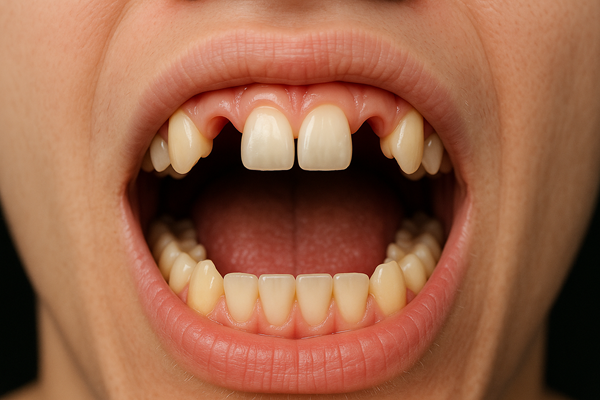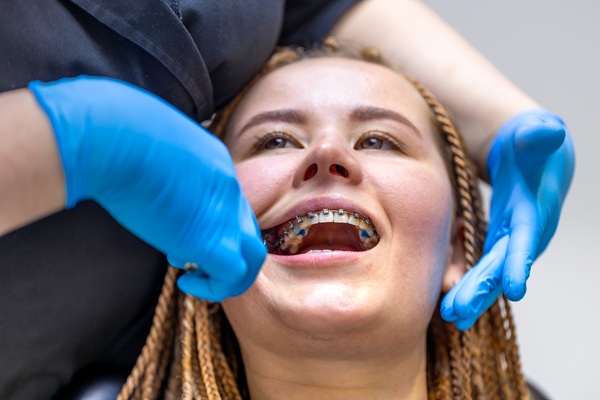Each of our teeth has a role to play to help us become healthy. However, there’s no doubt that those on the front are also the ones that play a role when it comes to aesthetics. A missing tooth can have a big impact on your ability to chew, speak and smile. Even more so when one of the fronts is missing, which can make people feel more self-conscious..
Whether you’re missing the middle one or one of your lateral incisors (the teeth next to the teeth at the centre), it’s understandable to feel like your smile looks incomplete or uneven. But there’s no need to worry because various dental treatments are now available to replace or restore your missing lateral incisors.
Let’s take a look at what lateral incisors are, some reasons why they might be missing, and what options you have for replacing them.
What Is a Lateral Incisor?
Before we look at the options, it’s important to first understand what a lateral incisor is.
Lateral incisors are the small, sharp teeth located next to your two front teeth (called central incisors) in the upper and lower jaw. Most people notice missing upper lateral incisors more than lower ones because they are highly visible when you smile or speak.
Lateral incisor teeth help in:
- Cutting food while chewing
- Guiding your bite when you close your mouth
- Supporting your lips and facial structure
- Giving balance and symmetry to your smile
If one or both lateral incisors are missing, it can be difficult to achieve their functional purpose. Aside from that, it can create noticeable gaps that often lead people to feel self-conscious about their appearance.
What Age Do Lateral Incisors Come In?
Baby (primary) lateral incisors usually erupt between 9 to 13 months of age, which will eventually be replaced by permanent (adult) lateral incisors between the ages of 8 and 9 years. However, for some children, their lateral incisors never form.
Is it possible? Yes, it does happen. This is a condition known as congenitally missing lateral incisors.
This is not uncommon. In fact, lateral incisors are one of the most frequently missing permanent teeth due to various reasons. When this happens, remember that this is not something to be threatened about and can be treated with dental services once the child’s growth is complete, often in their late teens or early twenties.
Why Might a Lateral Incisor Be Missing?
Now that we already know what congenitally missing lateral incisors are, it’s also important for us to understand why a lateral incisor might be missing. There are a few common reasons why someone may be missing a lateral incisor:
1. Genetics (Congenital Absence)
Some people are born without one or both lateral incisors. This is called hypodontia, which is a genetic condition where the teeth fail to develop. The thing about this is it’s often inherited, so if your parents or siblings have missing teeth, there’s a chance you might too.
2. Trauma or Injury
A fall or impact to the face can knock out or severely damage the lateral incisor. If the tooth cannot be saved, it may need to be removed entirely, which results in a missing lateral incisor
3. Tooth Decay or Gum Disease
Advanced decay or gum disease can weaken the support around a tooth, eventually leading to tooth loss. If this was not caught early, a tooth could be lost due to infection or bone loss. This can be your lateral incisor.
4. Orthodontic Crowding or Misalignment
Sometimes, other teeth shift out of place and push the lateral incisors out of alignment or prevent them from erupting properly. In some cases, these teeth become impacted (stuck in the gum) or are extracted as part of orthodontic treatment.
What Are Your Options for Replacing Missing Lateral Incisors?
There are many options now to replace missing incisors. You can consider these dental treatments to ensure your teeth can still function and you can still smile without hesitation.
1. Dental Implants
A dental implant is a small titanium screw placed in the jawbone where the natural root would be. Once the implant heals and integrates with the bone (a process called osseointegration), a custom-made crown is placed on top.
2. Traditional Dental Bridge
A dental bridge uses the teeth on either side of the gap as anchors to hold an artificial tooth in place. These anchor teeth are usually filed down and fitted with crowns.
3. Maryland Bridge (Resin-Bonded Bridge)
A less invasive option, a Maryland bridge attaches a false tooth to the back of the neighbouring teeth using a metal or ceramic wing.
4. Orthodontic Space Closure and Tooth Reshaping
In cases of congenital absence, orthodontic treatment (e.g. braces or clear aligners) may be used to move other teeth into the space where the lateral incisor is missing. The neighbouring canine tooth can then be reshaped to look like a lateral incisor.
5. Removable Partial Denture
A partial denture is a removable plate with one or more artificial teeth. While not the most modern solution, it may be used as a temporary fix or in cases where implants and bridges are not suitable.
Let’s Find the Right One for You
If you’re missing a lateral incisor, whether from birth, injury, or dental disease, you don’t have to live with the gap. There are proven and reliable ways to restore your smile, from dental implants to bridges and orthodontics.
Regardless of what treatment you decide on, it’s best to talk with a qualified dentist first to give you a more comprehensive understanding of your dental health.
For our team at Bellevue Hill Dental, we can offer our smile makeover treatment to help you freshen up your smile. This type of treatment is a combination of services that can improve your dental hygiene, improve appearance and enhance your quality of life.
Book your appointment with us or call us at (02) 9389 4748 for a consultation



